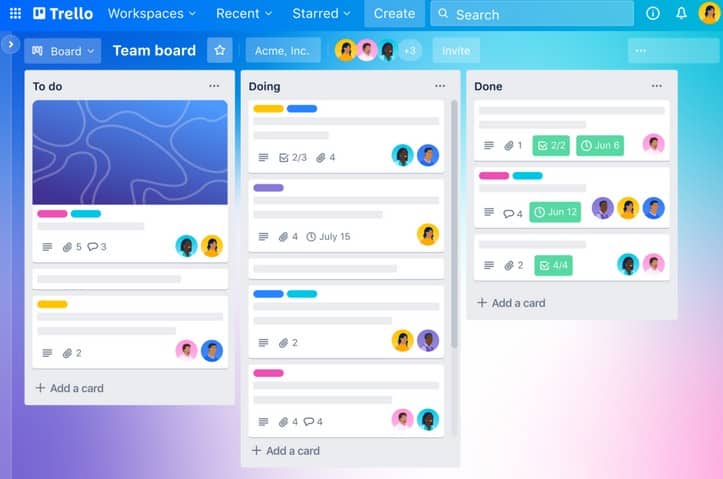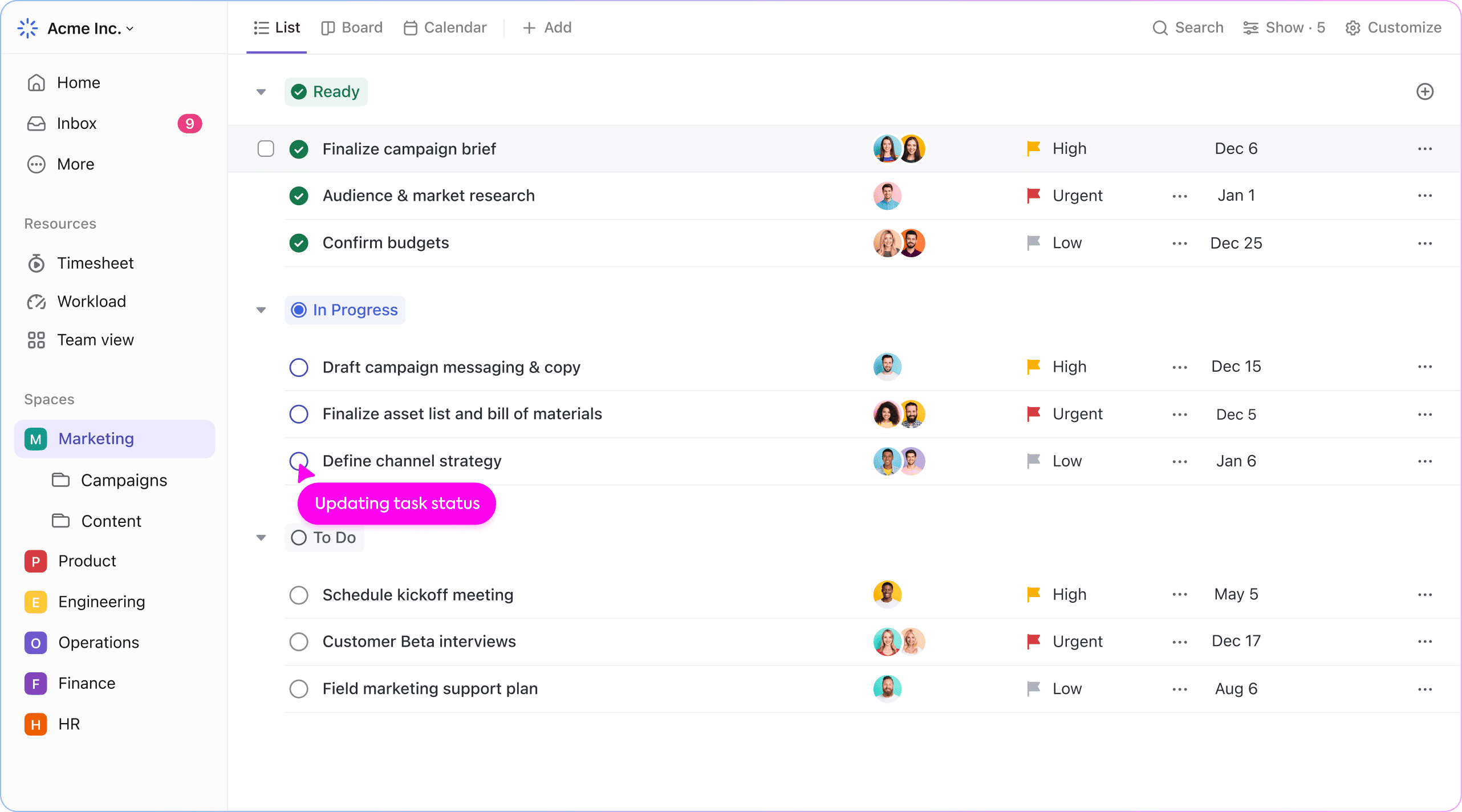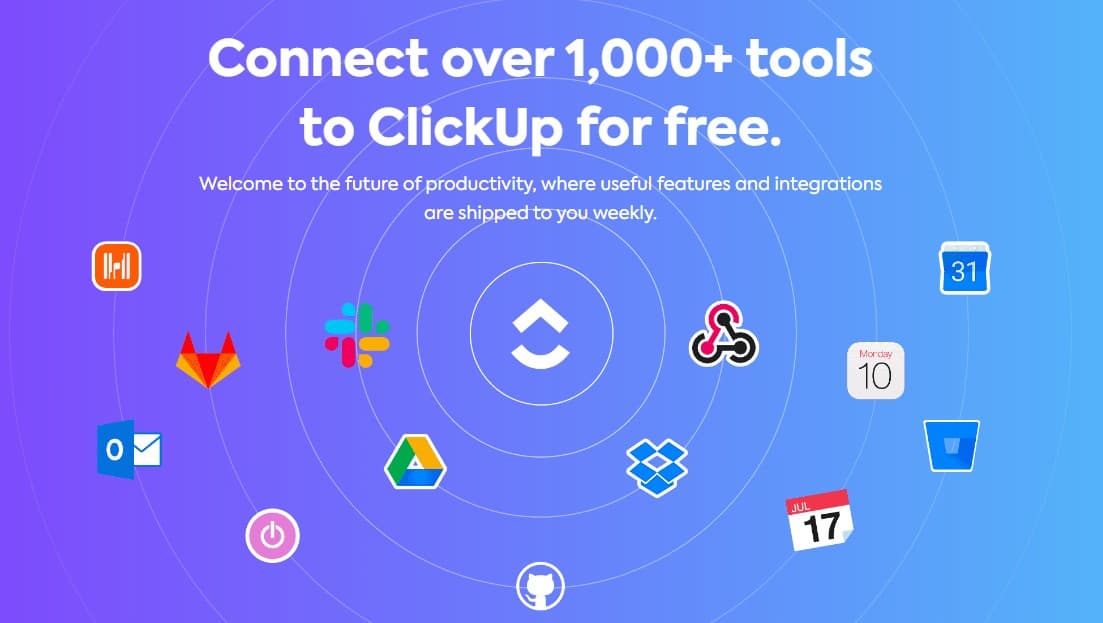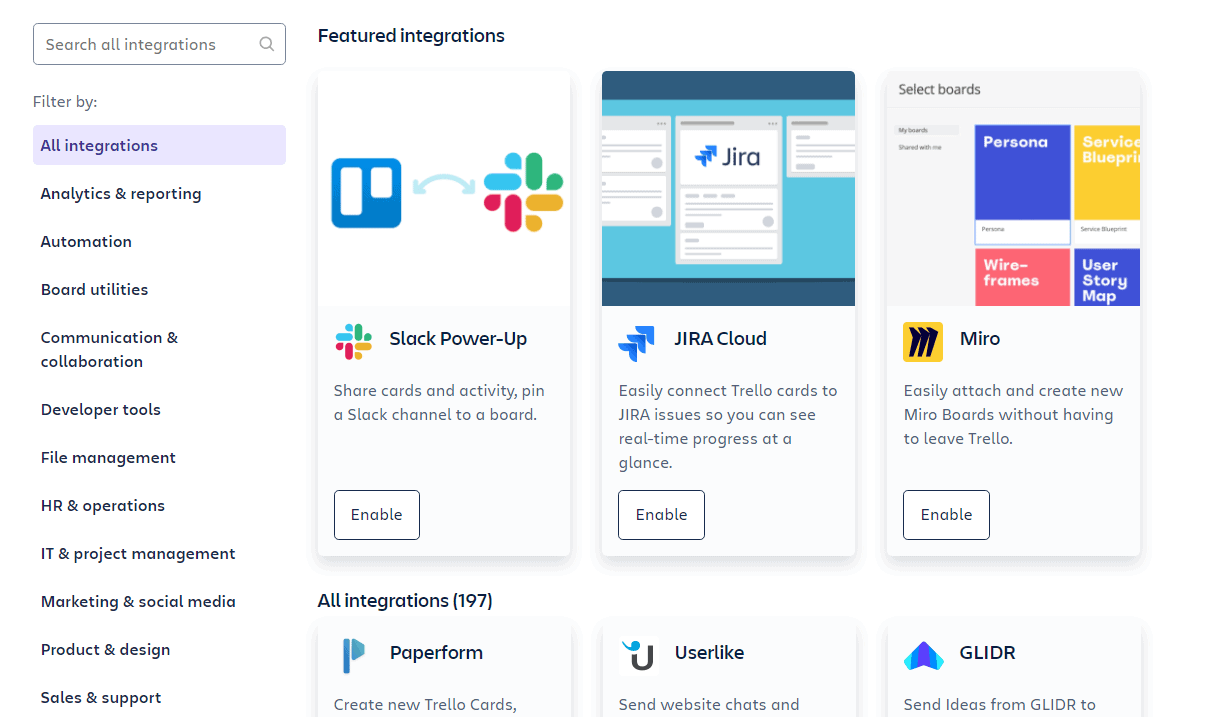Trello vs. ClickUp: Which PM Tool Does Your Team Need?
When it comes to choosing between all of the different project management solutions out there, sometimes it can feel like you need one just to navigate this process. To help you narrow down your choices — and save time and energy — we’ve done the research, reviewed, and compared two of the most popular project management platforms out there: Trello and ClickUp.
Continue reading to get a breakdown of each of these tools’ features and use cases, their pricing structures, pros and cons, and all of the information you need to make an informed decision tailored to you and your team’s unique needs.
What is Trello?

Trello is a visual, easy-to-use, cloud-based project management tool. When people are looking to get started with project management, Trello is usually mentioned as an ideal beginner-friendly option.
Great for everyone from entrepreneurs starting out to established teams, Trello helps users organize and prioritize tasks using a work management system made up of boards, lists, and cards. In this way, Trello’s interface is often compared to the functionality of using sticky notes to organize tasks and projects.
Due to this, Trello is often cited as being the platform that popularized the Kanban approach — a visual workflow management method in which each task is represented by a card on a board.
What is ClickUp?

As the self-proclaimed “one app to replace them all,” ClickUp is an all-in-one project management tool designed to streamline collaboration and task management for teams across an organization. Instead of having separate apps for your online documents, calendars, spreadsheets, to-do lists, chats, project management dashboards, and more, ClickUp’s flexible platform provides you with one place for everything.
Used by more than 2 million teams at companies worldwide, ClickUp aims to make working together easier. Because of this, ClickUp highlights features such as Whiteboards and collaborative Docs, in addition to the standard features you’d find in other project management tools.
ClickUp vs. Trello: Features and use-cases
While ClickUp and Trello are both classified as project management tools, they each have unique features and capabilities that cater to specific users and use cases. Let’s take a look at how their features compare so you can better decide which one works best for you or your organization.
Trello vs. ClickUp: Integrations

Trello and ClickUp both allow you to customize your experience and functionality with integrations.
ClickUp offers native integrations with business tools like Slack, Google Calendar, Gmail, and Github, and more than 1,000 Zapier integrations. Plus, ClickUp’s public API means you can build your own custom integration or app to make the tool work exactly the way you need it to.

In comparison, Trello offers more than 200 integrations and Power-Ups including Slack, Confluence, Miro, GitHub, and more. Although both bring more features into your Trello account, integrations bring in or send info to another device or account while Power-Ups tend to simply enhance or boost Trello’s capabilities. Like ClickUp, Trello’s public API means you and your team can create your own integration or Power-Up as needed.
Collaboration
The first thing you’ll want to consider when comparing the collaboration capabilities of each tool is whether you even need collaboration features. For example, if you’re a solopreneur who simply needs a tool to manage your own projects, you might not need any collaboration tools — and might find Trello is exactly what you’re looking for.
That’s not to say that Trello doesn’t have any collaboration features, but that in comparison, ClickUp offers a much more robust suite of collaboration tools. ClickUp’s real-time collaboration features, such as Whiteboards, task comments, document sharing, and collaborative editing in Docs, make it a comprehensive solution for teams looking to enhance communication and streamline workflows. For example, if your team is working on a campaign, you can use a Whiteboard to brainstorm creative concepts and strategies in real-time, visualize the project’s process with a team dashboard, check in and share info and files through in-app chats, see who’s online and working on what at any given time, and simultaneously work together with Docs and tasks.
As mentioned above, Trello doesn’t have quite the same number of collaboration features. That said, Trello offers several board templates designed to help teams work together, no matter where they are. Plus, Trello’s Table View feature helps teams stay on the same page and visualize everyone’s workload and focus at a glance. If you want more collaboration features, Trello offers some communication and collaboration integrations and Power-Ups like Miro and Microsoft Teams.
Trello vs. ClickUp: Automation
As you may have guessed, both ClickUp and Trello have automation capabilities that can streamline your workflows and cut down on repetitive (read: boring and time-consuming) tasks.
If you’re new to automation or looking to get set up quickly, Trello’s tool, Butler Automation, offers an incredibly user-friendly experience. With Butler Automation, you can create custom rules and commands using plain language, making it accessible even to those without extensive technical expertise. It’ll even automatically detect repetitive actions you’re taking on your Trello board and suggest automations you can set up in a single click — helpful for anyone who doesn’t even know what kinds of tasks they can actually automate.
In contrast, ClickUp has more than 100 pre-built, no-code automations you can choose from to help streamline your workflows and free up more time. You can do things like automatically assign tasks to other team members, post comments, move and update statuses, and more. For example, you can set up a rule that when a task’s due date arrives and the task hasn’t been marked complete yet, its priority level is automatically bumped up. In addition to internal automations like this, ClickUp Automations works with external apps and integrations, allowing for a seamless flow of tasks and information across all of your tools.
Another key difference between ClickUp and Trello’s automation capabitlites is ClickUp’s support for conditional automations. These allow users to create more custom automations by setting a specific trigger, conditions (such as specific assignees or custom fields), and resulting action. While not major, it does give you that bit of extra flexibility when it comes to automating your tasks and workflows.
ClickUp vs. Trello: Time tracking
When it comes to time tracking, ClickUp definitely surpasses Trello in terms of functionality and features. ClickUp offers an in-app timer that lets you track your time, add notes, set estimates, and view reports related to any of your tasks. With ClickUp’s free Chrome extension, you can track your time from your desktop, mobile, or web browser — plus start, stop, and jump in-between tracking tasks from anywhere. If you forgot to start your timer, you can also retroactively add time manually. In addition to ClickUp’s native time tracking, it also supports the connection of other time tracking apps like Toggl, Harvest, and more.
In comparison, Trello doesn’t currently offer this within the platform. However, you can connect one of their available third-party time-tracking integrations or Power-Ups if you need.
ClickUp vs. Trello: Pricing
When it comes to choosing between ClickUp vs. Trello, pricing is probably one of the biggest factors that’ll impact your decision.
Both platforms offer free trials of premium plans as well as forever free basic account options. ClickUp’s free plan includes 100MB of storage, unlimited tasks, unlimited free plan members, Whiteboards, collaborative docs, and more. Trello’s free version, on the other hand, is a bit more generous and provides more than enough features for anyone simply looking to manage personal or smaller projects. These include unlimited cards, built-in automations, unlimited Power-Ups, mobile app access, and more.
However, if customer support is important to you, ClickUps free plan does include 24/7 support while you’ll need to upgrade to Trello’s Enterprise Plan to receive 24/7 support from them.
If and when you outgrow the free plan from either Trello or ClickUp, their paid plan pricing is quite similar. Trello offers a Standard plan for $5 USD per user, per month, a Premium plan for $10 USD per user, per month, and an Enterprise plan starting at $17.50 USD per user, per month. In comparison, ClickUp’s Unlimited plan is $7 USD per user, per month, their Business plan is $12 per user, per month, and their Enterprise plan requires you speak to their sales department to receive a quote.
Integrate ClickUp and Trello with Unito
In some situations, choosing between ClickUp and Trello just isn’t possible. That might be because each tool fills a specific role in your organization and can’t be replaced, or simply that you have teams so used to their tool they won’t make the chance. So what do you do if you can’t choose?
You use Unito.
Unito is a no-code 2-way integration platform with the most customizable solutions for some of the most popular tools on the market, including ServiceNow, Azure DevOps, or project management software such as Trello, ClickUp, Jira, monday.com, and more.
Or you can try to connect ClickUp to Jira or ClickUp to GitHub for smoother collaboration with software developers.
With a single Unito flow, you can connect a ClickUp list with a Trello board, allowing you to keep track of even the most complex projects without jumping back and forth between tools.
Want to see how Unito can save you a ton of time managing multiple projects?
ClickUp vs. Trello: Which is better?
When it comes to the question of which project management platform is better, it really comes down to what you need from a tool. If you’re a freelancer or entrepreneur looking for an easy-to-use platform that won’t bog you down with complex features or any sort of learning curve, Trello is a great option that’ll help you stay organized and keep projects on track.
If you’re a growing or larger business looking for more flexibility and features, or if you’re looking to get rid of some of the other tools you’re using and consolidate your tech stack, ClickUp could be the right choice for you and your organization.
That said, there are definitely cases where Trello works for midsize to larger organizations and ClickUp can be perfect for smaller businesses or individual users. It all comes down to how exactly you’re going to use the tool, what your budget is, and what specific features you need.
Still not sure which tool to pick? Check out some of our other comparisons between Trello and similar tools:


